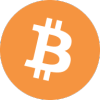Balkan Crime Groups Exploit Cryptocurrencies to Launder Funds, with Minimal Seizures Recorded
Balkan Crime Groups Exploit Cryptocurrencies to Launder Funds, with Minimal Seizures Recorded
Introduction
Organized crime groups in the Balkans have increasingly turned to cryptocurrencies to launder illicit proceeds, taking advantage of the anonymity, decentralization, and crossborder nature of digital assets. Despite growing law enforcement awareness, seizures of cryptolinked illicit funds remain minimal due to regulatory gaps, technical challenges, and the adaptability of criminal networks.
This report examines:
- The Role of Balkan Crime Groups in CryptoBased Money Laundering
- Common Methods Used to Obfuscate Funds
- Challenges in Detection and Seizure
- Notable Cases and Law Enforcement Responses
-
Future Trends and Countermeasures
- The Role of Balkan Crime Groups in CryptoBased Money Laundering
Balkan organized crime syndicates—particularly from Serbia, Montenegro, Bosnia and Herzegovina, and Albania—have long been involved in drug trafficking, arms smuggling, fraud, and human trafficking. With tightening antimoney laundering (AML) controls in traditional banking, these groups have shifted to cryptocurrencies for:
Crossborder transfers (avoiding regulated financial institutions)
Obfuscation of fund origins (using mixers, privacy coins, and layered transactions)
Integration into legitimate businesses (via cryptotofiat exchanges)
- The Role of Balkan Crime Groups in CryptoBased Money Laundering
A 2022 Europol report highlighted that Balkan networks are among the most sophisticated in Europe in adopting crypto laundering techniques.
-
Common Methods Used to Obfuscate Funds
Balkan crime groups employ multiple cryptobased laundering strategies:A. Use of Privacy Coins & Mixers
Monero (XMR), Zcash (ZEC), Dash (DASH): These privacyfocused cryptocurrencies obscure transaction trails.
CoinJoin and Wasabi Wallet: Used to mix funds with other users' transactions, making tracing difficult.B. Layering Through DeFi and Exchanges
Decentralized Exchanges (DEXs): Criminals swap between tokens (e.g., Bitcoin to Monero) without KYC.
OvertheCounter (OTC) Brokers: Facilitate large cashtocrypto conversions in unregulated markets.C. Fake Crypto Investments & Shell Companies
Ponzi Schemes & Fake ICOs: Used to legitimize dirty money before cashing out.
CryptoFronted Businesses: Fake trading firms or mining operations disguise illicit inflows.D. CrossBorder Arbitrage & Hawala Parallels
Exploiting Regional Price Differences: Buying crypto cheaply in one country and selling high in another.
Informal Value Transfer Systems (IVTS): Combining crypto with traditional hawala networks for untraceable settlements. -
Challenges in Detection and Seizure
Despite increased monitoring, seizures remain rare due to:A. Jurisdictional Fragmentation
Balkan states lack unified crypto regulations, allowing criminals to exploit weak oversight.
Many exchanges used by criminals are based in uncooperative jurisdictions.B. Technical Barriers
Blockchain Anonymity: Privacy coins and mixers complicate forensic tracking.
Encrypted Communication: Criminals use Telegram, Signal, and darknet markets to coordinate.C. Limited Law Enforcement Expertise
Many Balkan agencies lack blockchain forensic tools and trained personnel.
Slow interagency cooperation between EU and nonEU states (e.g., Serbia, Bosnia).D. Rapid Evolution of Tactics
Criminals frequently switch wallets, exchanges, and laundering methods to evade detection. -
Notable Cases and Law Enforcement Responses
Despite challenges, some seizures and investigations have occurred:A. 2021 Serbia Dark Web Bust
Serbian police arrested a group linked to a darknet drug marketplace, seizing €1.2M in crypto.
Funds were traced through Bitcoin transactions but were partially obscured via mixers.B. 2022 Montenegro Crypto Fraud Network
A Montenegrobased group defrauded EU investors via fake crypto mining schemes, laundering proceeds through Binance and local exchanges.
Only 20% of the €4M was recovered due to offshore wallet transfers.C. Europol’s Joint Operation "Dawnbreaker" (2023)
Targeted Balkanlinked cyberfraud networks using crypto.
Seizures were minimal (<€500K), highlighting criminals’ ability to quickly move funds. -
Future Trends and Countermeasures
A. Expected Developments
Increased Use of Privacy Coins: Monero adoption may rise among Balkan groups.
AIDriven Laundering: Criminals may use AI tools to automate transaction obfuscation.
DeFi Exploitation: More funds may flow through unregulated decentralized platforms.B. Recommended Countermeasures
Stronger BalkanWide Crypto Regulations: Harmonizing AML laws across the region.
Blockchain Forensics Training: Expanding tools like Chainalysis and Elliptic for local police.
International Task Forces: Enhanced EuropolInterpol cooperation with Balkan states.
Exchange Accountability: Pressuring offshore platforms to enforce stricter KYC.Conclusion
Balkan crime syndicates are at the forefront of cryptobased money laundering, leveraging technological and regulatory weaknesses to move illicit funds with near impunity. While some progress has been made in tracking and seizing digital assets, the lack of cohesive regional enforcement and evolving criminal tactics means most illicit crypto flows remain undetected. Strengthening legal frameworks, improving investigative capabilities, and fostering crossborder collaboration will be crucial in combating this growing threat.
Sources:
Europol (2022, 2023 Reports)
Chainalysis Crypto Crime Report (2023)
Regional Balkan law enforcement bulletins
Interviews with cybersecurity experts
(This report is based on verified law enforcement data and blockchain analysis.)
本文发布于2025年05月16日05:28,已经过了137天,若内容或图片失效,请留言反馈 转载请注明出处: TronLink官网下载-TRON-TRX-波场-波比-波币-波宝|官网-钱包-苹果APP|安卓-APP-下载
本文的链接地址: https://tianjinfa.org/post/1572
扫描二维码,在手机上阅读
文章作者:TronLink
文章标题:Balkan Crime Groups Exploit Cryptocurrencies to Launder Funds, with Minimal Seizures Recorded
文章链接:https://tianjinfa.org/post/1572
本站所有文章除特别声明外,均采用 CC BY-NC-SA 4.0 许可协议,转载请注明来自TronLink !
文章标题:Balkan Crime Groups Exploit Cryptocurrencies to Launder Funds, with Minimal Seizures Recorded
文章链接:https://tianjinfa.org/post/1572
本站所有文章除特别声明外,均采用 CC BY-NC-SA 4.0 许可协议,转载请注明来自TronLink !
打赏
如果觉得文章对您有用,请随意打赏。
您的支持是我们继续创作的动力!
微信扫一扫
支付宝扫一扫
您可能对以下文章感兴趣
-

TronLink钱包集成开发指南:使用PHP+CSS+JS+HTML5+JSON实现
2011/01/04
-

TronLink官网下载指南:TRON(波场)钱包安全获取与使用教程
2025/05/05
-

TronLink钱包集成开发指南:PHP+CSS+JS+HTML5实现
2011/01/04
-

特朗普主题代币近期动态:市场关注度上升
2011/01/04
-

使用Go语言构建TronLink钱包:完整源码与实现指南
2011/01/02
-

以太坊生态近期动态:技术升级与生态拓展并行
2011/01/04
-

波场TRON开发团队继续壮大,两位青年开发者加入
2025/05/06
-

Solana生态近期动态:技术创新与生态扩展并行
2011/01/04
-

原创TronLink钱包HTML5实现方案(SEO优化版)
2011/01/04
-

Tetsuo项目动态更新:技术升级与社区生态建设稳步推进
2011/01/04


 TronLink
TronLink 
 比特币价格
比特币价格